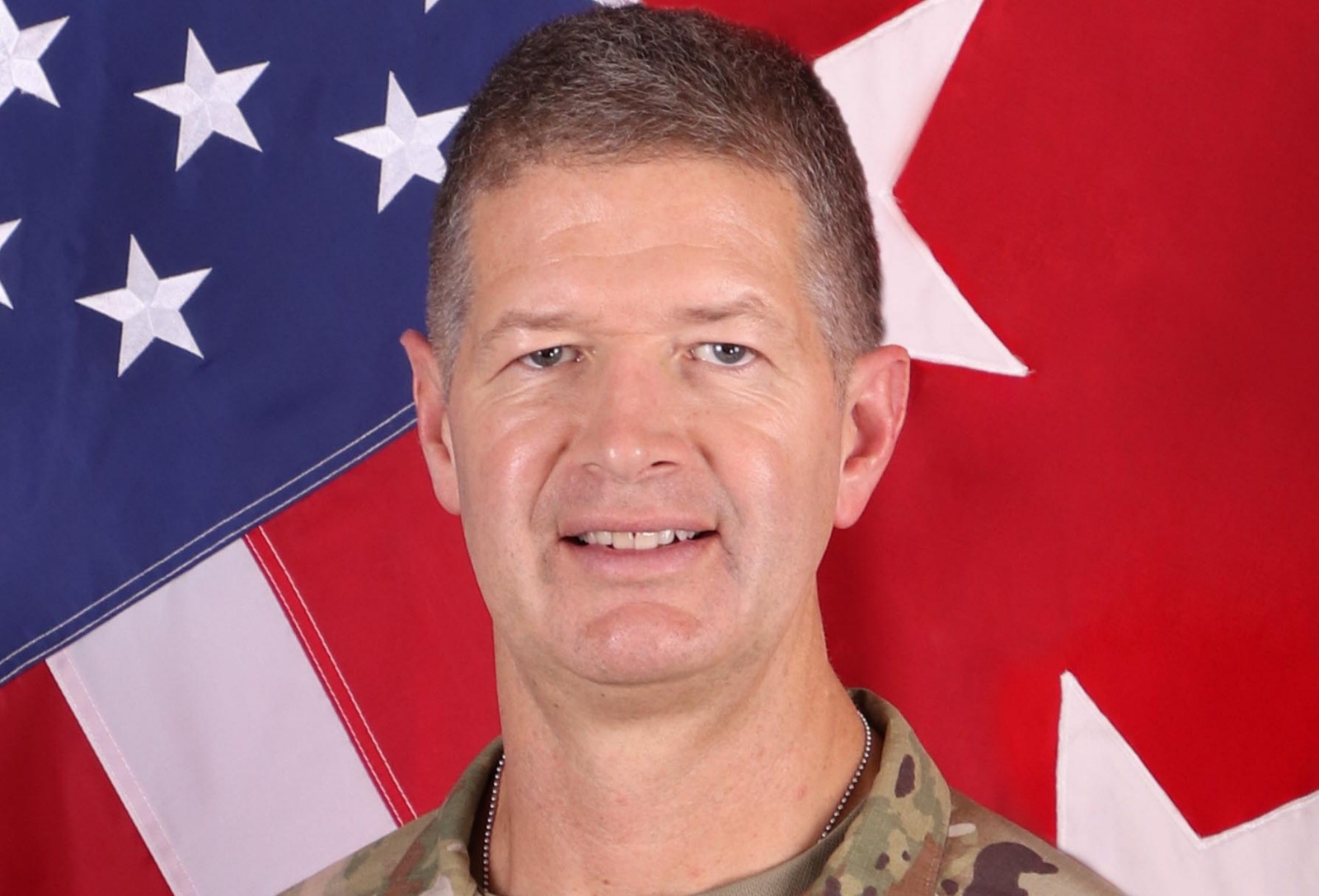Lieutenant General James B. Jarrard, Deputy Commanding General US Army Pacific
THE armed forces from both Malaysia and the United States are involved in several bilateral or multilateral military exercises every year. Among them are Cooperation Afloat Readiness and Training (CARAT), Cope Taufan, Keris Strike, Tiger Strike and Air Warrior. Through exercises like Keris Strike, the US Army builds readiness with direct military-to-military engagements and tough, realistic training. It is recorded that interaction between Malaysian Army and the US Army is long standing, even stretching back to the early 1960s when US officers and their men, mostly special forces personnel headed for South Vietnam were trained at the Jungle Warfare School in Ulu Tiram, Johor.
Asian Defence Journal posed some questions to the US Army Pacific (USARPAC) Deputy Commanding General, Lieutenant General James B Jarrard on the Keris Strike series of exercises, where he stressed that collaboration between both armies enhances interoperability and strengthens the Comprehensive Partnership between the two countries. Exercise Keris Strike 24, jointly conducted by the Malaysian Army, the US Army Pacific (USARPAC), was held recently in the Malaysian state of Sabah located in northern Borneo. The exercise spanned 15 days and involved a total of 3,141 military personnel including a contingent from the Australian Army.
ADJ: Can you provide an overview of Exercise Keris Strike and its primary objectives? What are the key focus areas of this year’s exercise?
Lt-Gen Jarrard: Keris Strike is an Army-to-Army exercise between US Army Pacific and Malaysian Armed Forces, focused on increasing interoperability, fostering regional partnership, and building readiness to secure a free and open Indo-Pacific.
Keris Strike is an annual exercise sponsored by the US Army Pacific and hosted by the Malaysian Armed Forces. The exercise included a staff exercise (STAFFEX) and Subject Matter Expert Exchanges (SMEE) focused on military policing, jungle survival, medical training, engineering, aviation practices, IED procedures, legal training, airborne operations and Chemical, Biological, Radiological, Nuclear, Explosives (CBRNE) training.
There were two “firsts” for this year’s exercise.
- It was the first time that the exercise occurred in East Malaysia.
- It was the first time that the Australian Army participated.
Keris Strike fulfilled key exercise objectives, including:
- Improving airborne and air assault interoperability
- Improving the ability to operate in a multinational environment with special emphasis on sustainment
- Enhancing military to military relationships
- Conducting a joint/combined jungle field training exercise with a U.S. battalion task force and a Malaysian brigade.
ADJ: How does Exercise Keris Strike enhance interoperability between the Malaysian Army, US Army Pacific, and the Australian Army?
Lt-Gen Jarrard: The joint training conducted by the U.S. Army and the Malaysian Armed Forces aims to prepare our troops to respond effectively to future potential crises, contingencies, and natural disasters. By engaging in realistic training scenarios, our units are better equipped to tackle challenges collectively. Through shared exercises, we aim to enhance our ability to work together efficiently and collaboratively.
Subject Matter Expert Exchanges (SMEEs), combined planning and rehearsals, and integrated operations allow us to increase interoperability with our partners. The SMEEs enhanced tactical interoperability across a variety of specialities while the combined planning and rehearsals generated a common understanding between commanders and staffs. As an example, our counterparts attended the squadron operations order and participated in our combined arms rehearsal. The SMEEs and combined planning enabled us to execute a brigade-level field training exercise across 120 kilometres with a scheme of manoeuvre that required significant adjacent unit coordination between tactical units.
ADJ: In what ways does multilateral exercises such as Exercise Keris Strike contribute to regional stability and security in the Asia-Pacific region? How do these exercises align with broader strategic objectives in the region?
Lt-Gen Jarrard: The United States’ Indo-Pacific Strategic vision is one of a region that is free, open, resilient, secure and prosperous. Multilateral exercises such as Keris Strike reinforce those objectives. The strategic landpower network in the Indo-Pacific is the security architecture that binds the region together. Through exercises like Keris Strike, the US Army builds readiness with direct military-to-military engagements and tough, realistic training. Bilateral and multilateral training enhances the readiness of both of our forces in an ever-changing environment. Collaboration between US Army Pacific and the Malaysian Army enhances interoperability and strengthens the Comprehensive Partnership between the US and Malaysia. Security and defence cooperation is a key pillar of the Comprehensive Partnership, and so are people-to-people and economic ties. The US is the top foreign direct investor in Malaysia and US companies are pioneers of Malaysia’s electrical and electronic industry and have been creating high-skilled, high-paying jobs for Malaysian partners for the last 50 years and contributing to the shared prosperity in the region.
ADJ: What are some of the unique challenges faced during Exercise Keris Strike, and how are they addressed? Are there any specific logistical or operational hurdles that stand out?
Lt-Gen Jarrard: Utilising exercises as rehearsals allows us to test and refine our processes and procedures alongside our partners. During Keris Strike 24, our units faced a challenge with limited logistical capabilities due to the nature of the roads and extended distances at which we operated. We adapted by incorporating aerial resupply into already templated air movements. This lesson will be accounted for in future iterations of Keris Strike.
We lacked technical interoperability with our Australian and Malaysian counterparts during the Keris Strike field training exercise. However, to overcome the lack of integrated communications, we employed Liaison officers within key elements to ensure that we had constant communication between formations. We also had Malaysian and Australian liaison officers incorporated into our command posts to ensure redundancy of communication.
Internally, we employed beyond line of sight systems through the use of Cloud Relay and Radio-over-Internet-Protocol (RoIP) to enable reliable and constant communication at a distance of approximately 90 kilometres.
ADJ: Can you discuss the role of technological advancements in enhancing the effectiveness of joint military exercises like Keris Strike? How are emerging technologies being integrated into the exercise?
Lt-Gen Jarrard: We continuously bring in new technologies to our training scenarios. During Keris Strike 24, the 3rd Multi-Domain Task Force established a Combined Information and Effects Fusion Cell (CIEFC) with their Malaysian counterparts. The fusion cell conducted multi-domain awareness with information already available in the public domain. The exercising units utilised the information processed through the CIEFC to receive real time information and rapidly share it with our Malaysian and Australian counterparts.
ADJ: Can you share insights on how cultural and linguistic differences are managed during joint exercises?
Lt-Gen Jarrard: Keris Strike 24 was the 29th iteration of the exercise. The US and Malaysia have a long-standing robust defense relationship. Our military-military relationship is strong and based on mutual respect and cooperation. Through combined training over the course of almost three decades, both militaries have developed mutual respect, trust and partnerships. There were cultural days and a sports day integrated into the exercise for both forces to understand, learn and teach about each other’s cultures.
ADJ: How does Exercise Keris Strike strengthen defence ties and cooperation among the participating nations?
Lt-Gen Jarrard: Training alongside Malaysian Armed Forces provides opportunities to learn important lessons and adapt to the operational environment which helps both of our Armies build and maintain readiness. Keris Strike 24 strengthened the bonds between the US and Malaysia by forging relationships, building capacity and promoting interoperability among partners. Every time we train together, our relationship grows stronger – developing a friendship that increases with every iteration of Keris Strike. Strong interpersonal relationships are formed that will be critical should we be called to work together for any reason. I am thankful for my friendship with Maj Gen Malek, the 5th Division General Officer Commanding, and his support to make Keris Strike such an overwhelming success.
ADJ: What role do exercises like Keris Strike play in broader multinational defence initiatives and alliances in the Asia-Pacific region? How do they contribute to collective defence and security frameworks, such as those of the Association of Southeast Asian Nations (ASEAN) and the Indo-Pacific Strategy?
Lt-Gen Jarrard: Armies in the Indo-Pacific are the security architecture that binds the region together. Exercises such as Keris Strike offer a valuable chance to train with our allies and partners to enhance interoperability, thereby bolstering our well-established military-to-military relationships. The presence of capable, interoperable forces throughout the region promotes peace and stability, which is advantageous to the interests of both the US and our partners.
ADJ: Looking ahead, what are the future goals and visions for multilateral exercises involving US Army Pacific such as Exercise Keris Strike? Are there any planned expansions or new elements to be introduced in upcoming iterations?
Lt-Gen Jarrard: We have already initiated discussions with the Malaysian Army on ways to increase the complexity and scope of future iterations of Keris Strike. Some of the initiatives discussed include various capabilities to enable combined arms manoeuvres with artillery, close air support and multi-domain effects. We have also discussed the opportunities to increase the number of nations that participate in Keris Strike. These adjustments provide the opportunities for our Armies to test new innovations and technologies in realistic, organised training events.
ADJ: How do you envision the evolving security landscape in the Asia-Pacific region impacting future joint military exercises? What emerging threats or challenges are likely to shape the focus of future exercises?
Lt-Gen Jarrard: The strategic land power network of allied and partner Armies is the greatest counterweight to destabilising activity in the Indo-Pacific region. Bilateral and multilateral operations and exercises increase our readiness and technical competence, interoperability and collective unity to respond to potential crises and threats in the region – whether they be natural or man-made.
ADJ: Is there anything else you would like to add about Exercise Keris Strike or the broader efforts of the US Army Pacific in the region?
Lt-Gen Jarrard: US Army Pacific is grateful to the strong relationship we share with the Malaysian Army and we look forward to deepening the powerful bonds of friendship we have developed well into the future. We are committed to our allies and partners in the region and it is through exercises such as Keris Strike that we strengthen these relationships.



